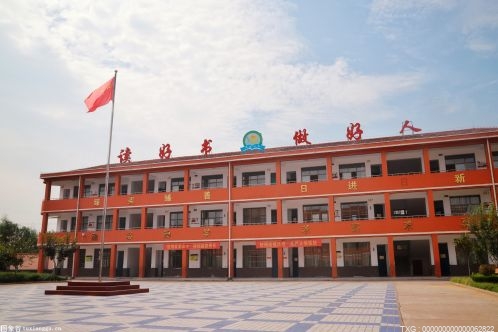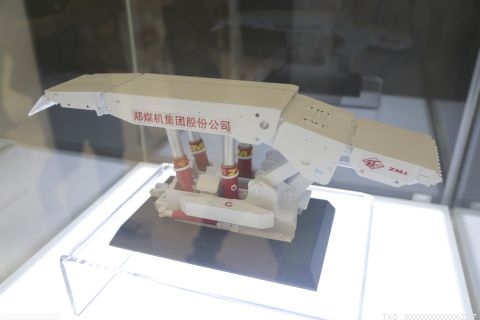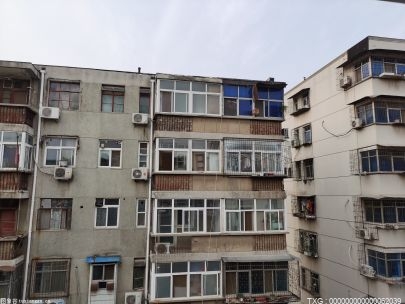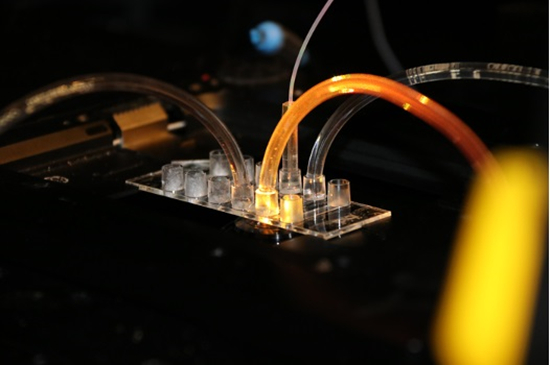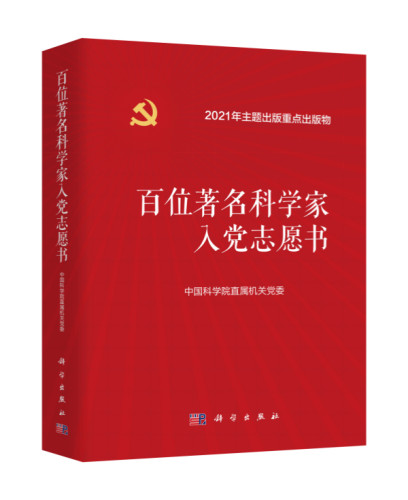撰文 | 郑建华
更新|赵露阳、王迎港
深度学习框架一般通过自动微分(autograd)机制计算梯度并反向传播。本文尝试通过一个简单的例子,粗浅地观察一下OneFlow的autograd的实现机制。
 (相关资料图)
(相关资料图)
1
自动微分基础
自动微分相关的资料比较多,个人感觉自动微分的原理介绍(https://mp.weixin.qq.com/s/BwQxmNoSBEnUlJ1luOwDag)这个系列及其引用的资料对相关背景知识的介绍比较完整清晰。
下面分几种情况对梯度传播的原理做一些直观解释。
1.1 stack网络的梯度传播
以x -> f -> g -> z这个stack网络为例,根据链式法则:
∂z/∂x = ∂z/∂g * ∂g/∂f * ∂f/∂x
实际运行时,在梯度反向传播过程中:
z将∂z/∂g传给g。
如果节点g有权重w需要计算梯度,就计算∂z/∂w = ∂z/∂g * ∂g/∂w。
g需要计算∂g/∂f,再乘以z传过来的梯度,将结果传给f。g只需要给f传递链式乘积的结果,不需要传递各项明细。
在训练阶段的前向计算时,g需要保存∂g/∂f计算依赖的中间结果、以供反向计算时使用。
其它节点的传播情况依次类推。
1.2 简单graph的梯度传播
以下面这个简单的graph拓扑为例。
在继续之前,需要了解一下多元复合函数微分的基本公式。 下图中,u和v都是关于x和y的函数,z是关于u和v的函数。
根据这个公式可以知道,z对x的梯度分别沿两条链路传播,z -> u -> x和z -> v -> x,节点x将两个梯度之和作为z对x的梯度。
1.3 复杂graph的梯度传播
再看一个拓扑稍微复杂点的例子:
上图可以视为x -> U -> L,其中U是e -> ... -> h的子图。f -> g的子图可以视为V。
对于节点h来说,它需要把梯度传给g和k。对节点e来说,它需要对f和k传来的梯度求和,才是∂L/∂e。这样,L对x的梯度,仍可以按链路拆解,一条链路前后节点间的梯度是乘积关系,传入的多条链路梯度是加和关系。
这篇博客(https://blog.paperspace.com/pytorch-101-understanding-graphs-and-automatic-differentiation/)中有一个几乎一样的拓扑图,给出了部分权重参数的梯度公式。
2
autograd中tensor相关的一些基本概念
2.1 叶子节点
OneFlow的autograd文档(https://docs.oneflow.org/en/master/basics/05_autograd.html)中介绍了leaf node和root node的概念。只有输出、没有输入的是leaf node,只有输入、没有输出的是root node。
个人理解,如果把weight、bias、data视为计算图的一部分,这些节点就是叶子节点(op不是叶子节点)。尤其是从反向计算图的视角(https://discuss.pytorch.org/t/what-is-the-purpose-of-is-leaf/87000/9)看,这些节点的grad_fn是空,反向传播到这些节点就会停止。
is_leaf和requires_grad有比较密切的关系,但二者又是独立的。PyTorch是这样解释的:(https://pytorch.org/docs/stable/generated/torch.Tensor.is_leaf.html#torch.Tensor.is_leaf)
requires_grad=false的节点都是叶子节点。比如data。
requires_grad=true的节点如果是用户创建的,也是叶子节点。比如weight和bias。
在梯度的反向计算过程中,只有叶子节点的梯度才会被填充。对于非叶子节点,如果要填充梯度信息,需要显式设置retain_grad=true。
requires_grad=true才会计算、填充梯度。比如y = relu(x),y是op创建的、不是叶子节点。但如果x需要计算梯度,则y.requires_grad==true。但不需要为y填充梯度。
关于叶子节点这个概念,目前找到的主要是直观描述,还没看到严格、清晰的定义。也可能是因为用户一般不会直接使用is_leaf(https://discuss.pytorch.org/t/what-is-the-purpose-of-is-leaf/87000/9),这个概念只是在阅读代码的时候才会涉及到。
下面的资料可以供进一步参考:
What is the purpose of `is_leaf`? (https://discuss.pytorch.org/t/what-is-the-purpose-of-is-leaf/87000)
叶子节点和tensor的requires_grad参数(https://zhuanlan.zhihu.com/p/85506092)
2.2 tensor detach
Tensor的detach方法(https://github.com/Oneflow-Inc/oneflow/blob/48e511e40e09551408c96722c09bd061ce320687/oneflow/core/framework/tensor_impl.cpp#L155)会创建一个新的tensor,新tensor的属性中
requires_grad = false
is_leaf = true
detach的意思是从grad的反向计算图中把tensor分离出来。新的tensor与原来的对象共享存储,但不参与反向图的拓扑构造。原有对象的requires_grad属性不变。
比如下面的代码,修改一个对象的数据,另一个对象的数据也会改变。
import oneflow as flowy = flow.Tensor([1, 2, 3])x = y.detach()x[0] = 4assert(y[0] == 4)
3
示例代码
本文通过如下代码来观察OneFlow的autograd机制。
import oneflow as flow# y is scalarx = flow.tensor([-1.0, 2.0], requires_grad=True)y = flow.relu(x).sum()y.backward()print(x.grad)# y is not scalarx = flow.tensor([-1.0, 2.0], requires_grad=True)y = flow.relu(x)y.backward(flow.Tensor([1, 1]))print(x.grad)
y.backward方法有两种接口:
如果y是一个标量(比如loss),不需要传递任何参数。
如果y是一个向量,需要传入一个与y的shape一致的向量作为参数。
为什么会有这种区别呢?下面几篇参考资料中对这个问题做了比较详细的解释。简单的说:
如果函数的输出是向量,在反向传播的过程中会造成梯度tensor shape的维度膨胀,实现复杂、性能差。
如果函数的输出是标量,反向传播梯度tensor的shape与参数变量的shape一致,不会出现维度膨胀,更容易实现。
对于向量版本的backward,可以假想存在某个loss函数,backward的参数是loss传播到y这里的梯度。因为前后节点间的梯度是乘积关系,所以用ones替代这个假想的梯度,这样计算结果x.grad就是y对x的梯度。
后续将以y.backward(flow.Tensor([1, 1]))为例观察一下autograd的机制。其反向图只有x <- y这一步。
参考资料
自动求梯度 (https://tangshusen.me/Dive-into-DL-PyTorch/#/chapter02_prerequisite/2.3_autograd?id=_233-梯度)
PyTorch 的 backward 为什么有一个 grad_variables 参数?(https://zhuanlan.zhihu.com/p/29923090)
3.1 梯度结果的存储
Tensor的grad属性(https://github.com/Oneflow-Inc/oneflow/blob/48e511e40e09551408c96722c09bd061ce320687/oneflow/api/python/framework/tensor.cpp#L611),在读取值时调用的是acc_grad()方法(acc应该是accumulate的缩写)。这样就知道梯度实际存储在哪里,读代码时可以重点关注相关部分。
调用流程如下:
注:图片中的MirroredTensor在最新源码中,已经更名为LocalTensor,其实是一样的。
4
autograd相关的类图关系
下图展示了autograd相关类的关系
在看autograd代码之前,可以参照这个类图,了解其中的结构和关系,有助于理解代码中各个部分的作用。
在eager模式下,用户通过op的组合逐步构建出前向计算图。在执行前向计算的过程中,引擎会为autograd需要的反向计算图记录必要的信息,在调用backward方法时执行这个反向计算图。
对照上面的类图
站在tensor的视角
前向op输出一个tensor y,即TensorIf <- ReluFunctor这部分。
从y可以找到反向计算图实际执行梯度计算的类,即TensorIf -> FunctionNode -> ReLU这个链路。
FunctionNode的backward_fn_包含了OpExprGradClosure。它只负责计算当前节点的梯度。
ReLU是执行梯度计算的类,它会调用ReluGradFunctor这个op来执行梯度计算。
站在反向图存储的视角
反向图相关的信息在FunctionNode中保存。
反向计算图的root是tensor(比如y或loss)的grad_fn_node_变量。
FunctionNode的next_functions_表示反向图的下游节点,当前节点把梯度结果传给这些下游节点。这些FunctionNode的连接就构成了反向图的拓扑结构。
tensor的梯度存储路径是TensorImpl.AutogradMeta.acc_grad_
AutogradMeta.current_grad_是反向图上游传递到当前节点的梯度合计。如果tensor t输入给op u和v,那么u和v反传的梯度会累加到current_grad_。current应该表示截至当前正在计算时的累加和。
FunctionNode虽然并不持有tensor实例,但它持有tensor的AutogradMeta成员变量指针。
基于上述relu的例子中的节点y
output_meta_data_即y.autograd_meta_
input_meta_data_即x.autograd_meta_
所以FunctionNode能获取到上下游的梯度数据并进行读写
AutoGradCaptureState可以存储一些梯度计算需要的状态信息,比如计算relu的梯度时需要用到它的前向输出结果y。
站在反向图执行的视角
GraphTask负责反向图的执行。
FunctionNode只保存必要的数据。
GraphTask基于这些数据,自己构造遍历需要的数据结构,遍历所有节点、执行梯度计算。
5
前向计算过程中为autograd所做的准备
反向图的执行过程是数据驱动的,数据的存储结构和内容决定了执行的具体动作。
以下讨论只针对eager模式。lazy模式下,反向图的构建是多轮优化passes的一部分(https://github.com/Oneflow-Inc/oneflow/blob/48e511e40e09551408c96722c09bd061ce320687/oneflow/core/framework/op_interpreter/op_interpreter.cpp#L98)。
之前在讨论Op、Kernel与解释器时已经了解Interpreter的作用。只是当时重点关注op的执行,忽略了grad相关的内容。
GetInterpreter(https://github.com/Oneflow-Inc/oneflow/blob/48e511e40e09551408c96722c09bd061ce320687/oneflow/core/framework/op_interpreter/op_interpreter_util.cpp#L67)返回的其实是一个AutogradInterpreter对象(https://github.com/Oneflow-Inc/oneflow/blob/48e511e40e09551408c96722c09bd061ce320687/oneflow/core/framework/op_interpreter/op_interpreter_util.cpp#L42),在它的Apply方法中(https://github.com/Oneflow-Inc/oneflow/blob/48e511e40e09551408c96722c09bd061ce320687/oneflow/core/framework/op_interpreter/op_interpreter.cpp#L86),调用内嵌Interpreter的同时,也会记录grad计算需要的信息。
AutogradInterpreter::Apply的主要流程如下:
Apply的第一步会先计算requires_grad。只要op的任一输入的requires_grad为true,op的输出的requires_grad也为true(https://github.com/Oneflow-Inc/oneflow/blob/48e511e40e09551408c96722c09bd061ce320687/oneflow/core/framework/op_interpreter/op_interpreter.cpp#L151-L152)(前提是输出的数据类型支持梯度)。y的requires_grad就是在这里决定的。
比如y = relu(x),如果数据类型支持梯度,y.requires_grad就等于x.requires_grad。
然后会调用内嵌的解释器internal_执行相关计算。在调用内嵌解释器期间,会临时禁止梯度模式,比如有些op可能会嵌套、多次调用解释器(ReluGradFunctor也会通过解释器执行),这些都不需要梯度逻辑。
需要说明的是,构造x时不会执行grad相关的逻辑,因为inputs的requires_grad都是false,x的requires_grad是在构造的最后才设置的(https://github.com/Oneflow-Inc/oneflow/blob/48e511e40e09551408c96722c09bd061ce320687/oneflow/api/python/utils/tensor_utils.cpp#L187)。
下面重点看一下几个核心函数的逻辑细节。
5.1 梯度闭包的构建
前面对类图的说明中已经提到,OpExprGradClosure只负责当前节点的梯度计算。
GetOrCreateOpGradClosure函数(https://github.com/Oneflow-Inc/oneflow/blob/48e511e40e09551408c96722c09bd061ce320687/oneflow/core/framework/op_expr.cpp#L146)的核心代码如下:
template<>Maybe
NewObj会调用AutoRegistrationFactory(https://github.com/Oneflow-Inc/oneflow/blob/48e511e40e09551408c96722c09bd061ce320687/oneflow/core/common/auto_registration_factory.h#L94)获取预先注册的工厂、创建对象。之前在讨论Op指令在虚拟机中的执行时也看到过类似的注册机制。
这里op_type_name的值是relu,在代码中搜索"relu",可以找到注册ReLU的宏(https://github.com/Oneflow-Inc/oneflow/blob/48e511e40e09551408c96722c09bd061ce320687/oneflow/core/autograd/gradient_funcs/activation.cpp#L562)。宏展开后的代码如下:
static AutoRegistrationFactory
所以实际返回的对象是ReLU(https://github.com/Oneflow-Inc/oneflow/blob/48e511e40e09551408c96722c09bd061ce320687/oneflow/core/autograd/gradient_funcs/activation.cpp#L200)。其Init函数是个空操作。
OpExprGradClosure只是简单的把ReLU存下来供backward执行时调用。整个调用流程如下:
5.2 捕获梯度计算需要的数据
调用流程如下:
Capture函数(https://github.com/Oneflow-Inc/oneflow/blob/48e511e40e09551408c96722c09bd061ce320687/oneflow/core/framework/op_interpreter/op_interpreter.cpp#L122)的作用就是为后续的梯度计算保存必要的数据。
需要注意的是,OpExprGradFunction::CaptureIf(https://github.com/Oneflow-Inc/oneflow/blob/48e511e40e09551408c96722c09bd061ce320687/oneflow/core/framework/op_expr_grad_function.h#L93)中保存的是detach的tensor。这些tensor与原来的tensor共享数据;可以读写梯度数据,但不会参与反向图的拓扑构造。这个函数把Interpreter传过来的op的detached outputs传给ReLU::Capture(https://github.com/Oneflow-Inc/oneflow/blob/48e511e40e09551408c96722c09bd061ce320687/oneflow/core/framework/op_expr_grad_function.h#L128)(就是relu的前向输出y),ReLU::Capture就把output[0]存到ReLUCaptureState的saved_tensors_中(https://github.com/Oneflow-Inc/oneflow/blob/48e511e40e09551408c96722c09bd061ce320687/oneflow/core/autograd/gradient_funcs/activation.cpp#L209)。因为对于relu来说,根据y就可以计算梯度。
5.3 保存反向图结构信息
AutogradInterpreter::Apply中会构造一个lambada表达式backward_fn(https://github.com/Oneflow-Inc/oneflow/blob/48e511e40e09551408c96722c09bd061ce320687/oneflow/core/framework/op_interpreter/op_interpreter.cpp#L103-L110),其核心逻辑只有一行grad_closure->Apply。
这个lambda的主要作用就是捕获grad_closure这个智能指针。lambda表达式最终会作为FunctionNode的backward_fn_变量。这样才有类图中FunctionNode到OpExprGradClosure这条线,才能从FunctionNode找到closue、执行节点的梯度计算。
GetThreadLocalAutogradEngine()->AddNode这个函数(https://github.com/Oneflow-Inc/oneflow/blob/48e511e40e09551408c96722c09bd061ce320687/oneflow/core/framework/op_interpreter/op_interpreter.cpp#L113)很关键,AddNode的主要任务(https://github.com/Oneflow-Inc/oneflow/blob/48e511e40e09551408c96722c09bd061ce320687/oneflow/core/autograd/autograd_engine.cpp#L478)是为inputs和outputs创建FunctionNode、并保存反向图遍历需要的数据。其输入参数中的inputs/outputs,是前向计算的op的inputs/outputs。对于relu来说,inputs就是x,outputs就是y。
在上述示例代码中,对于x,因为它是叶子节点、也需要梯度,在AddAccumulateFunctionNode会将grad_fn_node设置为一个空操作的函数(https://github.com/Oneflow-Inc/oneflow/blob/48e511e40e09551408c96722c09bd061ce320687/oneflow/core/autograd/autograd_engine.cpp#L508)。之所以是空操作,是因为叶子节点只需要存储梯度、不需要自己计算梯度;它所需要的梯度计算结果会由反向图的上游节点保存到x.autograd_meta_中。
之后会为y构造GraphFunctionNode并形成节点连接(https://github.com/Oneflow-Inc/oneflow/blob/48e511e40e09551408c96722c09bd061ce320687/oneflow/core/autograd/autograd_engine.cpp#L491)、并保存到grad_fn_node(https://github.com/Oneflow-Inc/oneflow/blob/48e511e40e09551408c96722c09bd061ce320687/oneflow/core/autograd/autograd_engine.cpp#L495)。需要注意的是,这里的backward_fn就是AutogradInterpreter::Apply中的lambda表达式(https://github.com/Oneflow-Inc/oneflow/blob/48e511e40e09551408c96722c09bd061ce320687/oneflow/core/framework/op_interpreter/op_interpreter.cpp#L103-L109)。
需要注意的是,AddBackwardFuncPtr中的inputs/outputs是针对op而言,GraphFunctionNode构造函数中同名变量的是针对FunctionNode而言,二者的含义和指向的对象是不一样的。
构造完成后,x和y的grad_fn_node_字段数据内容如下:
x.grad_fn_node_
name_: accumulate_gradnext_functions_: 空input_meta_data_: 空output_meta_data_: size=1,x.autograd_meta_,requires_grad=true,is_leaf=trueoutput_tensor_infos_: 对应x, relu前向op的inputbackward_fn_: 空函数,AddAccumulateFunctionNode中定义的
y.grad_fn_node_
name_: relu_backwardnext_functions_: size=1, x.grad_fn_node, 空操作, AddAccumulateFunctionNode中构造的GraphFunctionNodeinput_meta_data_: x.autograd_meta_, requires_grad=true, is_leaf=trueoutput_meta_data_: size=1, y.autograd_meta_, requires_grad=false, is_leaf=falseoutput_tensor_infos_: 对应y, relu前向op的outputbackward_fn_: AutogradInterpreter::Apply中定义的lambda函数
backward就是根据这些数据,从roots出发,完成反向图的遍历。
6
backward的入口
在《OneFlow源码阅读4:tensor类型体系与local tensor》(https://segmentfault.com/a/1190000041989895)中提到过,Tensor类在Python端经过一层包装,通过Python机制为Tensor类注册一些方法,backward就是包装的方法之一。
相关的源代码文件如下
python/oneflow/framework/tensor.py
python/oneflow/autograd/__init__.py
oneflow/python/oneflow/autograd/autograd.py
oneflow/api/python/autograd/autograd.cpp
C++的调用流程如下:
这里重复一下本文使用的示例代码:
import oneflow as flowx = flow.tensor([-1.0, 2.0], requires_grad=True)y = flow.relu(x)y.backward(flow.Tensor([1, 1]))print(x.grad)
上述示例代码执行时,Backward(https://github.com/Oneflow-Inc/oneflow/blob/48e511e40e09551408c96722c09bd061ce320687/oneflow/api/python/autograd/autograd.cpp#L90)的主要参数的值如下:
outputs: y, relu输出的tensor
out_grads: [1, 1]
CheckAndInitOutGrads(https://github.com/Oneflow-Inc/oneflow/blob/48e511e40e09551408c96722c09bd061ce320687/oneflow/api/python/autograd/autograd.cpp#L49)返回的是loss通过当前op、传到当前节点的梯度。其部分逻辑就是第3节讨论的
如果y是一个向量,backward必须传入一个与y的shape一致的向量(https://github.com/Oneflow-Inc/oneflow/blob/48e511e40e09551408c96722c09bd061ce320687/oneflow/api/python/autograd/autograd.cpp#L72-L81)。
如果y是一个标量,backward不要参数,框架会自动构造一个全1的tensor(https://github.com/Oneflow-Inc/oneflow/blob/48e511e40e09551408c96722c09bd061ce320687/oneflow/api/python/autograd/autograd.cpp#L70)。
7
反向计算中GraphAutogradEngine的调用流程
反向图计算的流程分析可以结合3类信息
流程代码
上述x和y的grad_fn_node_的值
类图以及类之间的关系
RunBackwardAndSaveGrads4LeafTensor(https://github.com/Oneflow-Inc/oneflow/blob/48e511e40e09551408c96722c09bd061ce320687/oneflow/core/autograd/autograd_engine.cpp#L445)函数的几个参数是:
outputs: relu的输出y
out_grads: 用户自己构造的ones [1, 1]
7.1 反向传递过来的梯度的累加
RunBackwardAndSaveGrads4LeafTensor(https://github.com/Oneflow-Inc/oneflow/blob/release/0.7.0/oneflow/core/autograd/autograd_engine.cpp#L447)函数中,PushPartialTensor(https://github.com/Oneflow-Inc/oneflow/blob/48e511e40e09551408c96722c09bd061ce320687/oneflow/core/autograd/autograd_engine.cpp#L450)的作用就是将loss传过来的梯度累加到autograd_meta_.current_grad_.acc_tensor_。第4节中提到,TensorArg.acc_tensor_存储的就是loss传过来的梯度的合计。这就是roots(即y)接收到的梯度,要么是框架自动创建的ones,要么是用户提供的梯度(通常也是ones)。
这行代码的逻辑可以用如下伪码表示
outputs[i].impl_.autograd_meta_.current_grad_.acc_tensor_ += out_grads[i]
7.2 反向图计算任务的构造与执行
FunctionNode只是记录了反向图的基础信息。RunBackwardAndSaveGrads4LeafTensor中会再构造一个GraphTask对象来表示一次反向计算任务。
GraphTask的构造函数(https://github.com/Oneflow-Inc/oneflow/blob/48e511e40e09551408c96722c09bd061ce320687/oneflow/core/autograd/autograd_engine.cpp#L452)主要是初始化反向图的roots_节点,并将图中各个节点的依赖计数dependencies_置为0。根据示例代码,roots_就是y(通常是loss)。
ComputeDependencies(https://github.com/Oneflow-Inc/oneflow/blob/48e511e40e09551408c96722c09bd061ce320687/oneflow/core/autograd/autograd_engine.cpp#L321)会对反向图进行深度优先遍历、统计图中各个节点的依赖计数。
GraphTask::Apply(https://github.com/Oneflow-Inc/oneflow/blob/48e511e40e09551408c96722c09bd061ce320687/oneflow/core/autograd/autograd_engine.cpp#L405)中实现了反向图的遍历逻辑(传入的save_grad_for_leaf参数是true)。当FunctionNode的依赖为0时,节点才会被放入执行队列(https://github.com/Oneflow-Inc/oneflow/blob/48e511e40e09551408c96722c09bd061ce320687/oneflow/core/autograd/autograd_engine.cpp#L439),后续会对反向图执行按拓扑序遍历。FunctionNode::Apply执行时,它的依赖都执行完毕了。GraphTack::Apply这个函数中,涉及梯度计算逻辑主要包括两部分:
调用node->Apply执行单个节点的梯度计算(https://github.com/Oneflow-Inc/oneflow/blob/48e511e40e09551408c96722c09bd061ce320687/oneflow/core/autograd/autograd_engine.cpp#L421)
调用node->AccGrad4LeafTensor存储算好的梯度(https://github.com/Oneflow-Inc/oneflow/blob/48e511e40e09551408c96722c09bd061ce320687/oneflow/core/autograd/autograd_engine.cpp#L430)
7.3 节点的梯度计算
FunctionNode::Apply(https://github.com/Oneflow-Inc/oneflow/blob/48e511e40e09551408c96722c09bd061ce320687/oneflow/core/autograd/autograd_engine.cpp#L187)中,处理output_meta_data_的for循环(https://github.com/Oneflow-Inc/oneflow/blob/48e511e40e09551408c96722c09bd061ce320687/oneflow/core/autograd/autograd_engine.cpp#L195-L205)的核心逻辑可以用如下伪码表示:
acc_tensor = output_meta_data_[i].current_grad_.acc_tensor_if (acc_tensor != nullptr) { output_grads[i] = acc_tensor_} else { output_grads[i] = zeros()}
从中可以看出来,output_grads的作用就是拷贝上游传过来的梯度数据(指针),作为backward_fn_的参数。
后面可以看到,backward_fn(https://github.com/Oneflow-Inc/oneflow/blob/48e511e40e09551408c96722c09bd061ce320687/oneflow/core/autograd/autograd_engine.cpp#L206)的核心逻辑是:
// d(y)表示当前节点对y的梯度,比如relu对其输出y的梯度。input_grads = d(y) * output_grads
input_grads就是当前节点传给下游节点的梯度,调用backward_fn时会对它进行赋值。
处理input_meta_data的for循环的核心逻辑(https://github.com/Oneflow-Inc/oneflow/blob/48e511e40e09551408c96722c09bd061ce320687/oneflow/core/autograd/autograd_engine.cpp#L214)可以用如下伪码表示。实质就是将当前节点传给下游节点的梯度,累加到下游节点的current_grad上,从而实现梯度的传播。如果tensor输入给多个op,每个op的梯度会加起来。
input_meta_data_[i].current_grad_.acc_tensor_ += input_grads[i]
7.3.1 梯度计算的执行:backward_fn
以下只考虑前述示例的root节点的执行。也就是y对应的FunctionNode。对于y来说,backward_fn就是AutogradInterpreter::Apply中定义的lambda表达式(https://github.com/Oneflow-Inc/oneflow/blob/48e511e40e09551408c96722c09bd061ce320687/oneflow/core/framework/op_interpreter/op_interpreter.cpp#L103-L110)。 对于relu来说,执行过程如下:
之前在5.1节已经确认,OpExprGradClosure::impl_就是ReLU(https://github.com/Oneflow-Inc/oneflow/blob/48e511e40e09551408c96722c09bd061ce320687/oneflow/core/autograd/gradient_funcs/activation.cpp#L200)。
如前所述,backward_fn的参数中,output_grads是上游传过来的梯度数据,backward_fn需要计算relu的梯度,二者的乘积赋值给in_grads。这些参数会一直传递到ReLU::Apply(https://github.com/Oneflow-Inc/oneflow/blob/48e511e40e09551408c96722c09bd061ce320687/oneflow/core/autograd/gradient_funcs/activation.cpp#L213)。
functional::ReluGrad(https://github.com/Oneflow-Inc/oneflow/blob/48e511e40e09551408c96722c09bd061ce320687/oneflow/core/autograd/gradient_funcs/activation.cpp#L219)的Functor名字是ReluGrad。对应的Functor是ReluGradFunctor(https://github.com/Oneflow-Inc/oneflow/blob/48e511e40e09551408c96722c09bd061ce320687/oneflow/core/functional/impl/activation_functor.cpp#L61)(命名空间是oneflow::one::functional::impl)。
ReluGradFunctor之后,是基于Primitive kernel实现的计算逻辑。ReluGradFunctor中对应op名字是"relu_grad",这个relu_grad的注册被包在一个宏定义(https://github.com/Oneflow-Inc/oneflow/blob/48e511e40e09551408c96722c09bd061ce320687/oneflow/user/kernels/activation_kernels.cpp#L331)中,实际上会返回一个BinaryPrimitiveKernel,这是一种稍显特殊的基于Primitive的kernel,其具体为ep::primitive下的一种BroadcastElementwiseBinary工厂(https://github.com/Oneflow-Inc/oneflow/blob/48e511e40e09551408c96722c09bd061ce320687/oneflow/user/kernels/activation_kernels.cpp#L337-L339),其对应的cpu和cuda注册分别位于:
oneflow/core/ep/cpu/primitive/broadcast_elementwise_binary.cpp
oneflow/core/ep/cuda/primitive/broadcast_elementwise_binary.cu
最终实现位于binary_functor.h(https://github.com/Oneflow-Inc/oneflow/blob/48e511e40e09551408c96722c09bd061ce320687/oneflow/core/ep/common/primitive/binary_functor.h#L354):
template
至此,完成了梯度计算的逻辑。
7.4 梯度的存储
FunctionNode::Apply执行完毕后,GraphTask::Apply调用FunctionNode::AccGrad4LeafTensor(https://github.com/Oneflow-Inc/oneflow/blob/48e511e40e09551408c96722c09bd061ce320687/oneflow/core/autograd/autograd_engine.cpp#L430)为叶子节点拷贝梯度数据。
在上述例子中,因为y不是叶子节点,处理到y.grad_fn_node_时不会进行实质处理。对于x,会调用CopyOrAccGrad(https://github.com/Oneflow-Inc/oneflow/blob/48e511e40e09551408c96722c09bd061ce320687/oneflow/core/autograd/autograd_engine.cpp#L84),这个函数逻辑的伪码形式如下
autograd_meta.acc_grad_ += autograd_meta.current_grad_
autograd_meta.acc_grad_就是Python端读到的x的梯度。
参考资料
https://github.com/Oneflow-Inc/oneflow/tree/48e511e40e09551408c96722c09bd061ce320687
OneFlow学习笔记:Autograd解析
自动微分的原理介绍
自动求梯度 (https://tangshusen.me/Dive-into-DL-PyTorch/#/chapter02_prerequisite/2.3_autograd?id=_233-梯度)
PyTorch 的 backward 为什么有一个 grad_variables 参数?(https://zhuanlan.zhihu.com/p/29923090)
PyTorch 101, Part 1: Understanding Graphs, Automatic Differentiation and Autograd (https://blog.paperspace.com/pytorch-101-understanding-graphs-and-automatic-differentiation/)
其他人都在看
Vision Transformer这两年
OneFlow源码解析:Global Tensor
更快的YOLOv5问世,附送全面中文解析教程
李白:你的模型权重很不错,可惜被我没收了
Stable Diffusion半秒出图;VLIW的前世今生
大模型狂潮背后:AI基础设施“老化”与改造工程
OneEmbedding:单卡训练TB级推荐模型不是梦
欢迎Star、试用OneFlow最新版本:https://github.com/Oneflow-Inc/oneflow/https://github.com/Oneflow-Inc/oneflow/




















